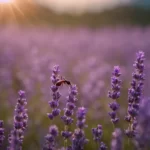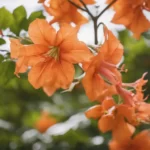Eating ants may seem unusual or unappealing to many, but in certain situations, like outdoor adventures or in diverse cultural cuisines, it’s not uncommon to consume these tiny insects. While the thought of eating ants might be off-putting to some, it’s important to understand their nutritional value, potential health benefits, and safety considerations. This article explores what happens if you eat ants, shedding light on an often overlooked aspect of dietary choices.
Nutritional Value of Ants
Ants, like many insects, are surprisingly nutritious. They are a good source of protein, an essential nutrient for muscle building and repair. In comparison to traditional protein sources like meat, ants offer a leaner option with a high protein content. They also contain vital vitamins and minerals necessary for good health. For instance, they are rich in calcium, which is crucial for bone health, and iron, which is essential for blood health. This nutritional profile makes ants a potentially beneficial addition to the diet, especially in regions where conventional protein sources are scarce.
Potential Health Benefits
Consuming ants might provide several health benefits. Their high protein and low-fat content make them a healthier alternative to traditional meats that are often high in saturated fats. Ants also contain formic acid, a chemical that has been studied for its potential health benefits, including antibacterial properties. These unique components could make ants not only a sustainable but also a beneficial food source. However, it’s important to note that scientific research on the health benefits of eating ants is still in its early stages, and more studies are needed to fully understand their impact on human health.
Possible Risks and Allergies
While eating ants is generally safe, there are some potential risks and allergic reactions to consider. Similar to other foods, individuals can have allergic reactions to ants, which might manifest as itching, swelling, or more severe symptoms. Additionally, certain ant species carry venom, which, although typically harmless in small quantities, can cause adverse reactions in some people. It’s also important to be cautious about the environment from which the ants are sourced, as ants from polluted areas might accumulate harmful substances.
Ants in Different Cultures and Cuisine
Ants have been a part of the diet in various cultures around the world. In some South American countries, ants are considered a delicacy and are used in traditional dishes, often roasted or ground into a paste. In parts of Asia, ants and ant eggs are incorporated into meals for their unique flavor and texture. Understanding the cultural significance of eating ants can broaden our perspective on food and nutrition, showcasing the diversity of dietary practices globally.
The Taste of Ants
The flavor profile of ants might surprise those unfamiliar with entomophagy (the practice of eating insects). Many describe ants as having a slightly acidic or tangy taste, primarily due to the formic acid they contain. This acidity can add a unique zest to dishes, akin to a citrusy seasoning. The texture of ants also plays a role in their culinary appeal, offering a crunchy contrast in various recipes. Different species of ants have distinct flavors, so the taste can vary significantly depending on the type of ant consumed.
Environmental Impact of Eating Ants
The sustainability of consuming ants compared to traditional livestock is an important consideration. Insects, including ants, require significantly less land, water, and feed than cattle or poultry, making them a more environmentally friendly protein source. Additionally, ants emit fewer greenhouse gases than conventional livestock. By integrating ants into the diet, there could be a positive impact on reducing the environmental footprint associated with food production. However, it’s essential to consider the ecological role of ants. As crucial contributors to soil aeration and decomposition, large-scale harvesting of wild ants could potentially disrupt local ecosystems.
Preparing and Cooking Ants
For those interested in trying ants, proper preparation and cooking are crucial. If harvesting ants from the wild, it’s important to avoid areas that have been exposed to pesticides or other contaminants. Once collected, ants should be thoroughly cleaned and, in some cases, purged to ensure they are safe to eat. Cooking methods vary, but roasting or frying can enhance their flavor and crunchiness. Ants can be incorporated into various dishes, from adding them to salads for a tangy crunch to using them as a protein-rich topping on soups or blending them into sauces.
Conclusion
Eating ants presents a unique culinary experience that combines nutritional benefits with environmental sustainability. While there are potential risks and allergies to consider, ants offer a high-protein, low-fat alternative to traditional meat sources. The cultural significance and diverse culinary uses of ants highlight the vast spectrum of human diets and the potential of insects as a sustainable food source. As the world explores more eco-friendly and diverse dietary options, the inclusion of ants and other edible insects could become more prevalent, challenging our conventional notions of food and nutrition.



